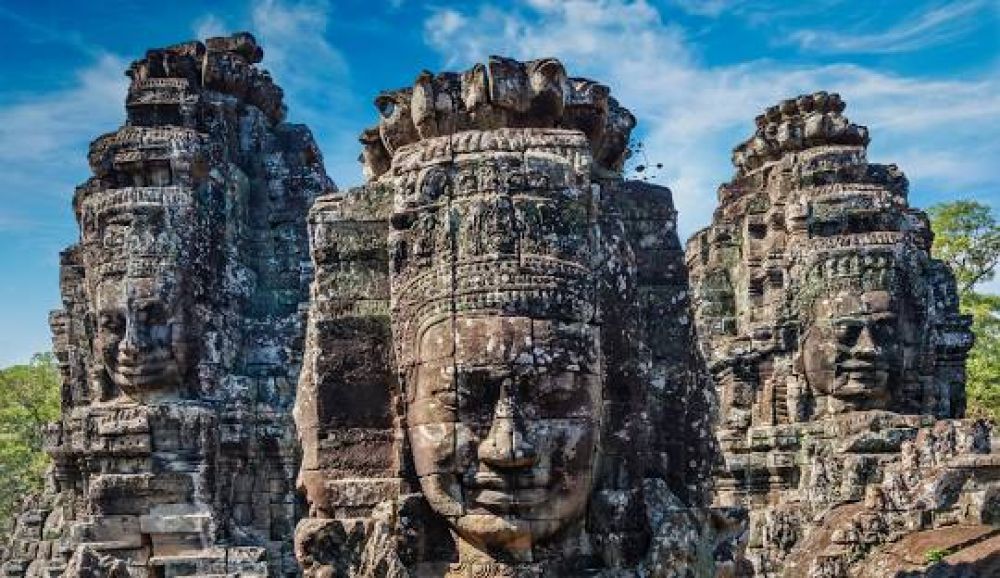

Located in the heart of the ancient city of Angkor Thom, Bayon Temple stands as one of the most enigmatic and powerful religious constructions in Cambodia's history. Built in the late 12th or early 13th century as the state temple of the Mahayana Buddhist King Jayavarman VII, the temple reflects the shift from Hinduism to Buddhism that characterized the period. Bayon's most distinctive feature is the multitude of serene and smiling stone faces on the many towers which jut out from the upper terrace and cluster around its central peak.
The allure of Bayon and the Angkor complex began attracting European visitors in the 19th century after France colonized Cambodia. Early explorers and archaeologists were captivated by the temple's elaborate carvings and mysterious towers. By the 20th century, Bayon became a focal point for cultural tourism in Southeast Asia.
In the late 20th century, political instability in Cambodia resulted in a significant downturn in tourism. However, with the end of these troubles by the 1990s, there was a resurgence of international interest in Cambodia’s historical sites. In 1992, UNESCO listed the entire Angkor area, including the Bayon Temple, as a World Heritage Site, a designation that helped to promote responsible tourism and the conservation of these breathtaking ruins.
Today, visitors from around the world flock to Bayon Temple to gaze upon its iconic and enigmatic stone faces.
Beyond the Temple: Tourism in the region has expanded to include other activities such as exploring nearby markets, visiting floating villages on the Tonle Sap Lake, and participating in responsible wildlife tours.
As Bayon Temple continues to intrigue and inspire visitors with its mystical presence and historical significance, Cambodia remains committed to preserving this national treasure while embracing the evolving trends that keep tourism thriving.